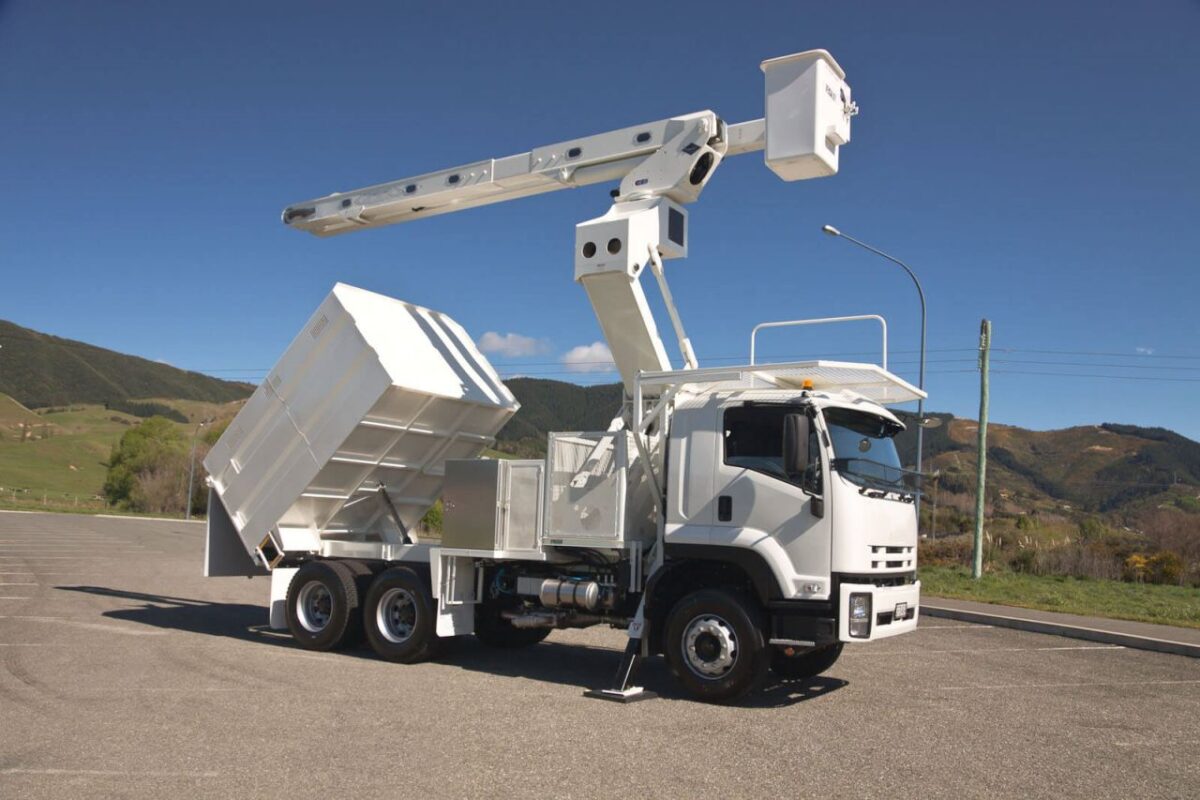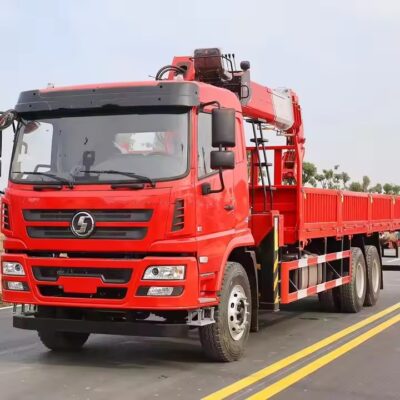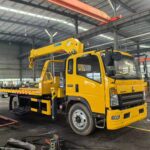In the modern landscape of construction, maintenance, and various industrial tasks, the demand for efficiency, ohutus, and productivity has never been higher. Aerial lift trucks, also known as elevated work platforms or aerial work platforms, have emerged as indispensable tools in achieving these goals. These versatile machines have transformed the way workers approach tasks that require elevation, providing a safe and efficient alternative to traditional methods. This article delves into the world of aerial lift trucks, exploring their benefits, types, applications, and their crucial role in enhancing both safety and productivity.
The Evolution of Elevated Work Platforms: A Necessity Arises
Historically, tasks that required working at heights posed significant challenges. Workers often had to rely on ladders, scaffolding, or other precarious means to access elevated work areas. These methods were not only time-consuming but also posed significant risks to worker safety. The need for a safer and more efficient solution gave rise to the development of aerial lift trucks.
Types of Aerial Lift Trucks: From Scissor Lifts to Boom Lifts
Aerial lift trucks come in various configurations, each designed to cater to specific tasks and working conditions. Among the most common types are scissor lifts, boom lifts, and personnel lifts.
1. Scissor Lifts: These platforms use a folding crisscrossing mechanism that elongates like a scissor when raised. Scissor lifts are ideal for tasks that require vertical movement without much horizontal reach. They are widely used in indoor maintenance, construction, and warehouse applications.
2. Boom Lifts: Boom lifts are characterized by their extendable arm, or boom, that can reach both vertically and horizontally. Articulated boom lifts provide flexibility around obstacles, while telescopic boom lifts offer impressive height reach. Boom lifts are invaluable for tasks such as building maintenance, tree trimming, and construction.
3. Personnel Lifts: Designed for smaller-scale tasks, personnel lifts offer a compact and lightweight solution for indoor maintenance and repair work. They are often used in spaces with limited access and lower height requirements.
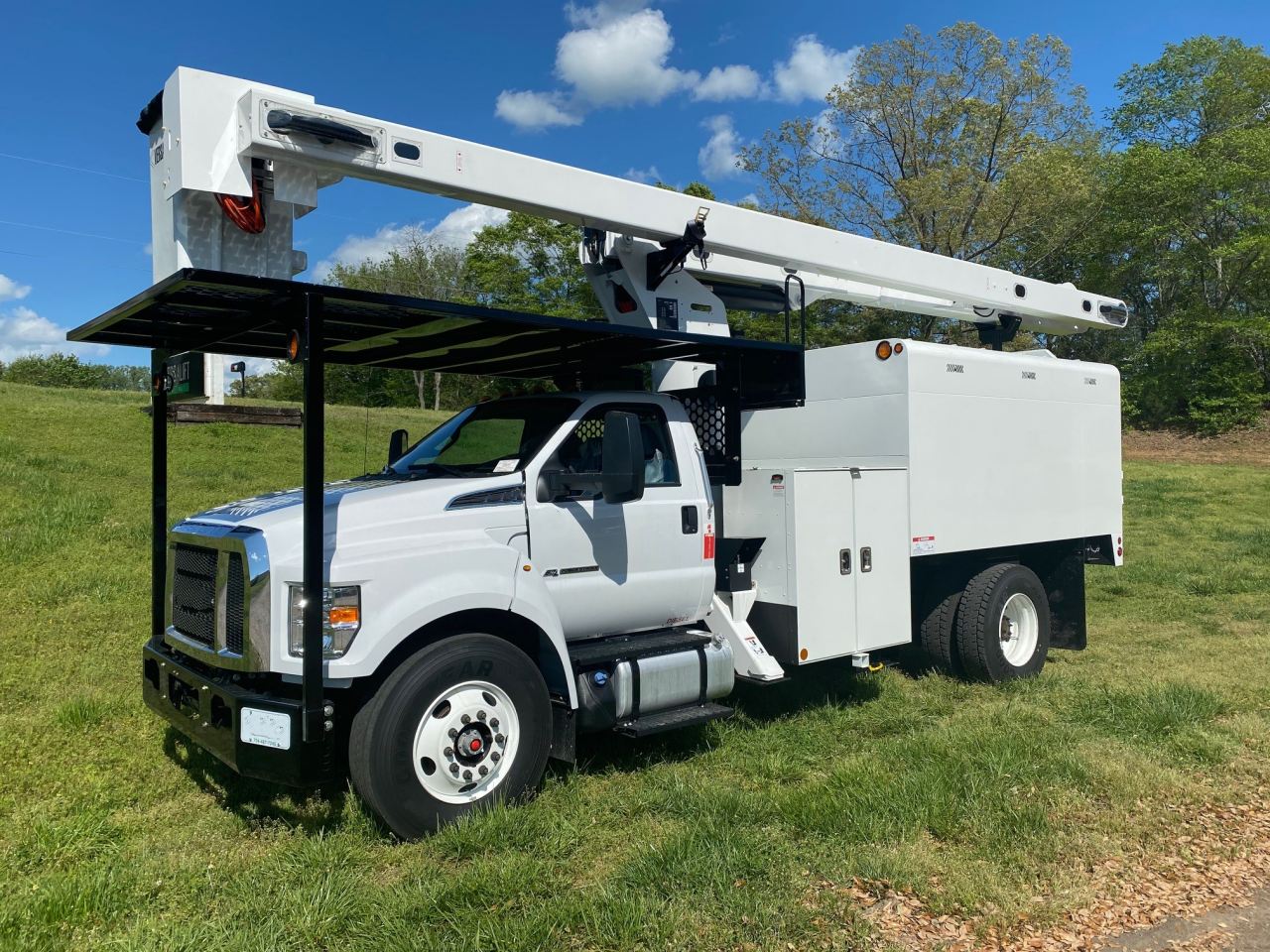
Enhancing Safety: A Prime Concern
One of the most significant advantages of aerial lift trucks is the improvement in worker safety. These platforms are equipped with safety features such as guardrails, harness attachment points, emergency shut-off controls, and non-slip surfaces. Compared to traditional methods, aerial lift trucks provide a stable and secure platform for workers to perform their tasks without the risk of falls or accidents. Furthermore, the elevation and maneuverability offered by these platforms reduce the need for risky behaviors like overreaching or using unstable makeshift platforms.
Boosting Productivity: Reaching New Heights
While safety is paramount, elevated work platforms also contribute to enhanced productivity. The efficiency gains are twofold: reduced setup time and improved access. Traditional methods of accessing elevated areas often required significant time for setting up scaffolding or climbing ladders. Aerial lift trucks eliminate this time-consuming setup, allowing workers to begin their tasks promptly. Lisaks, the ability to reach difficult-to-access areas, whether high above or over obstacles, means tasks can be completed more efficiently. This is especially valuable in industries where time is of the essence, such as construction and emergency repairs.
Applications Across Industries: From Construction to Film Production
The versatility of aerial lift trucks lends them to a wide range of applications across various industries:
1. Ehitus: In construction, aerial lift trucks are indispensable for tasks such as installing windows, painting, welding, and roofing. They provide easy access to elevated work areas on construction sites, increasing worker efficiency and safety.
2. Maintenance and Repair: Facilities maintenance, whether in warehouses, factories, or commercial buildings, often requires workers to access ceiling fixtures, HVAC systems, or lighting installations. Aerial lift trucks simplify these tasks, reducing downtime and maintenance costs.
3. Utilities and Telecommunications: Aerial lift trucks play a crucial role in maintaining utility poles, power lines, and telecommunication towers. They ensure that workers can access these high points without the risks associated with traditional methods.
4. Film and Entertainment: The film and entertainment industry utilizes aerial lift trucks to achieve dramatic shots from unique angles. These platforms provide cinematographers with the ability to capture scenes that would be otherwise challenging or impossible to film.
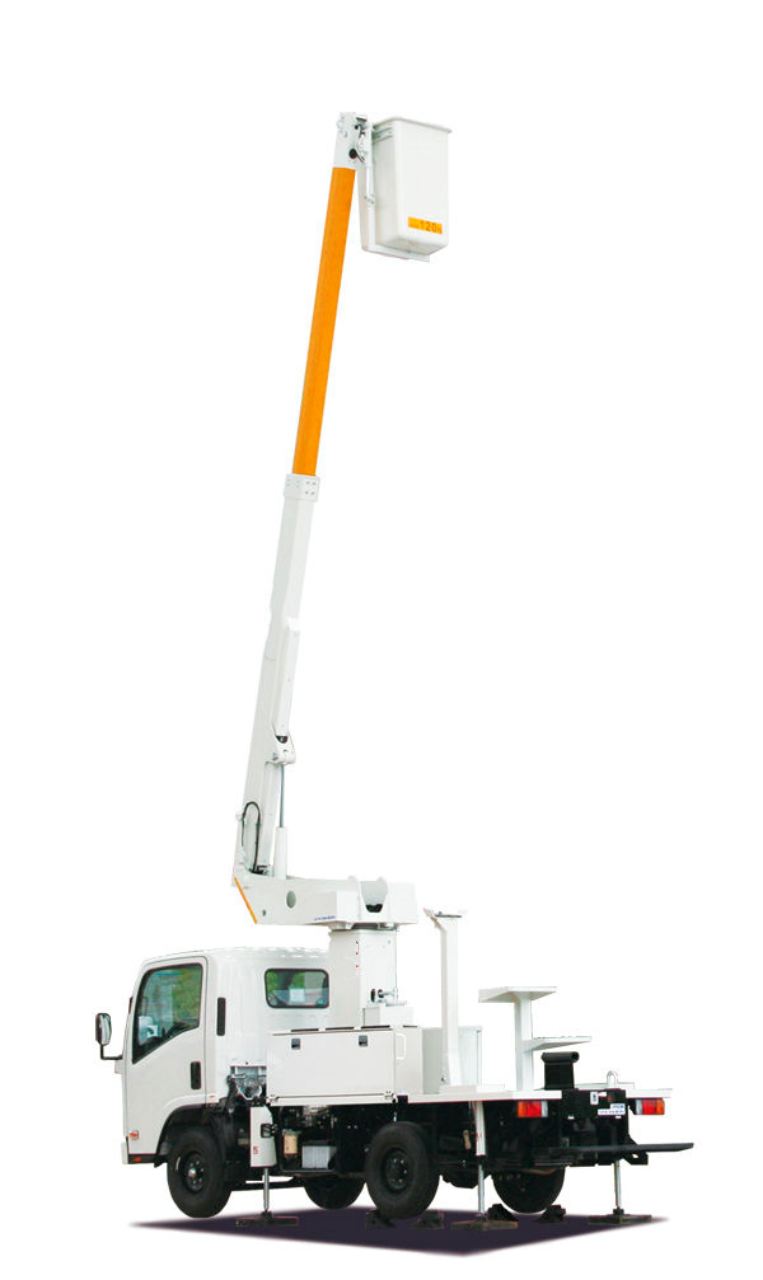
Environmental Considerations: Going Green
As industries increasingly prioritize environmental responsibility, aerial lift trucks have adapted to meet these expectations. Many models now feature electric or hybrid power sources, reducing emissions and noise pollution. This makes them suitable for indoor applications where ventilation may be limited and outdoor tasks in noise-sensitive areas.
Future Trends and Innovations: Soaring Beyond Boundaries
The realm of aerial lift trucks is not stagnant; it’s a domain marked by continuous innovation and improvement. As technology advances and industries evolve, several trends are shaping the future of these elevated work platforms.
1. Automation and Remote Operation: The integration of automation and remote operation technology is changing the way aerial lift trucks are operated. Remote-controlled platforms can be maneuvered in tight spaces, hazardous environments, or locations that are difficult for human operators to access. This trend not only improves safety by reducing the need for human presence in high-risk scenarios but also enhances efficiency by allowing operators to control multiple platforms simultaneously.
2. Advanced Safety Systems: While safety features have always been a core aspect of aerial lift truck design, the incorporation of advanced safety systems is taking this to the next level. Proximity sensors, collision avoidance technology, and real-time monitoring are becoming integral components. These systems alert operators to potential hazards, help prevent collisions, and ensure that the platform is used within safe parameters.
3. Telematics and Data Analytics: The digital age has ushered in a wealth of opportunities to collect, analyze, and utilize data for improving performance. Aerial lift trucks are now equipped with telematics systems that gather data on usage patterns, maintenance needs, and operator behaviors. This data allows companies to optimize fleet management, schedule maintenance proactively, and identify opportunities for operator training.
4. Lightweight and Compact Designs: In industries where access to confined spaces is crucial, lightweight and compact aerial lift truck designs are gaining traction. These platforms can navigate tight corners and fit through narrow doorways, expanding their usability in various indoor settings such as warehouses, manufacturing facilities, and retail spaces.
5. Renewable Energy Integration: The push for sustainability has led to the exploration of renewable energy sources for powering aerial lift trucks. Solar panels and regenerative braking systems are being integrated into platforms to reduce reliance on traditional fuel sources. This not only reduces environmental impact but also lowers operational costs over time.
6. Hybrid and Electric Variants: The shift towards greener technologies is pushing manufacturers to develop hybrid and electric variants of aerial lift trucks. These models emit fewer pollutants, generate less noise, and offer cost savings in terms of fuel consumption and maintenance. As battery technology continues to improve, we can expect increased range and efficiency from electric models.
7. Spetsiaalsed rakendused: As industries become more specialized, so do their equipment needs. Aerial lift trucks are being designed to meet the unique demands of specific industries. Näiteks, models equipped with specialized attachments for tasks like glass installation, painting, or signage placement are becoming more prevalent, catering to niche markets with precision.
8. Augmented Reality (AR) Integration: AR technology is finding its way into the operation and maintenance of aerial lift trucks. AR glasses or heads-up displays can provide operators with real-time information, such as load capacities, maintenance checklists, and navigation guides, enhancing efficiency and reducing errors.
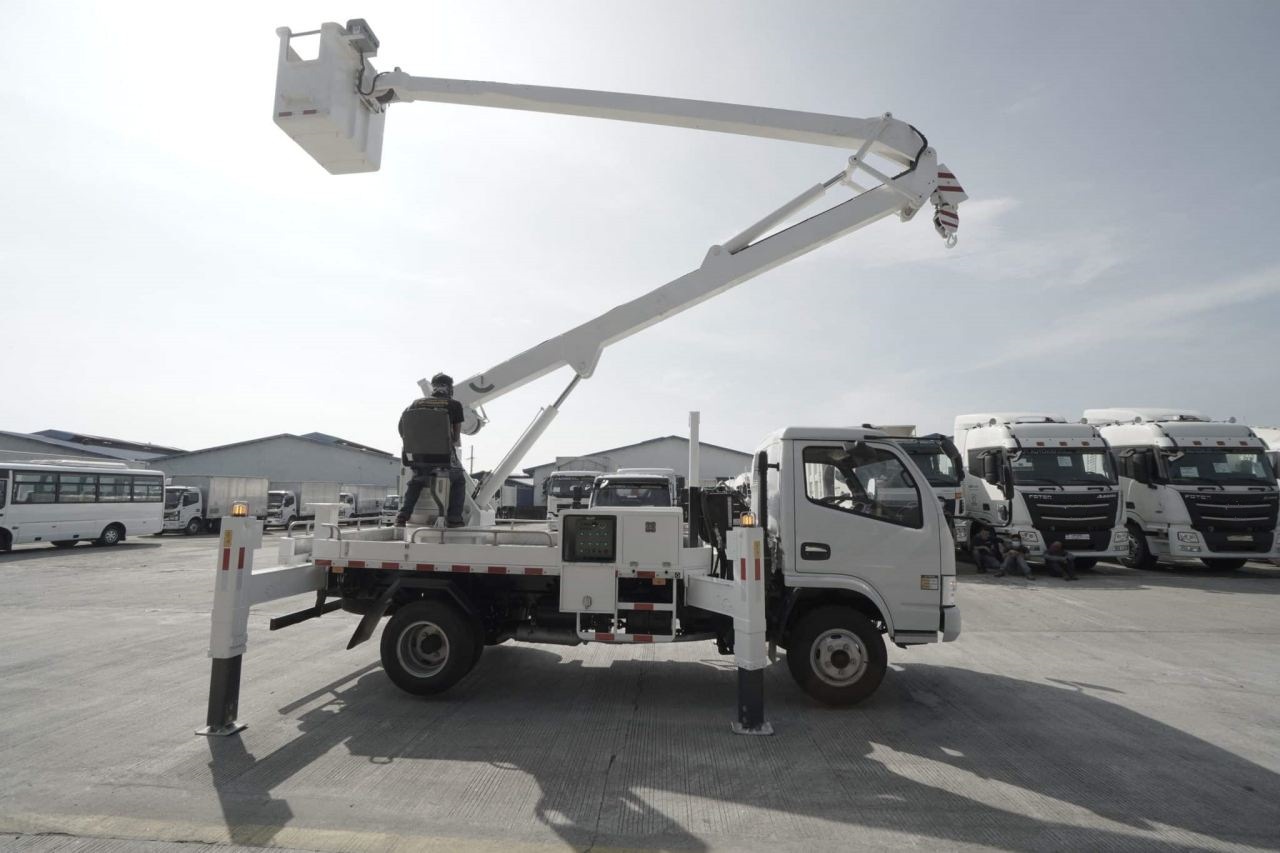
Järeldus: Soaring Towards a Safer and More Efficient Future
The evolution of aerial lift trucks from rudimentary platforms to sophisticated, technologically advanced machines has significantly impacted various industries. These elevated work platforms have transcended mere tools; they have become essential enablers of safe, productive, and sustainable operations. As innovations continue to shape the landscape, we can expect aerial lift trucks to not only further improve safety and efficiency but also expand their applications into new frontiers.
The journey from traditional methods fraught with risks to the adoption of aerial lift trucks symbolizes progress and adaptability. These machines embody the marriage of human ingenuity with technological prowess, redefining the boundaries of what is possible in industries as diverse as construction, maintenance, utilities, and entertainment. As the curtain lifts on the future, aerial lift trucks are poised to play a starring role in elevating the standards of safety, productivity, and innovation across the board.

